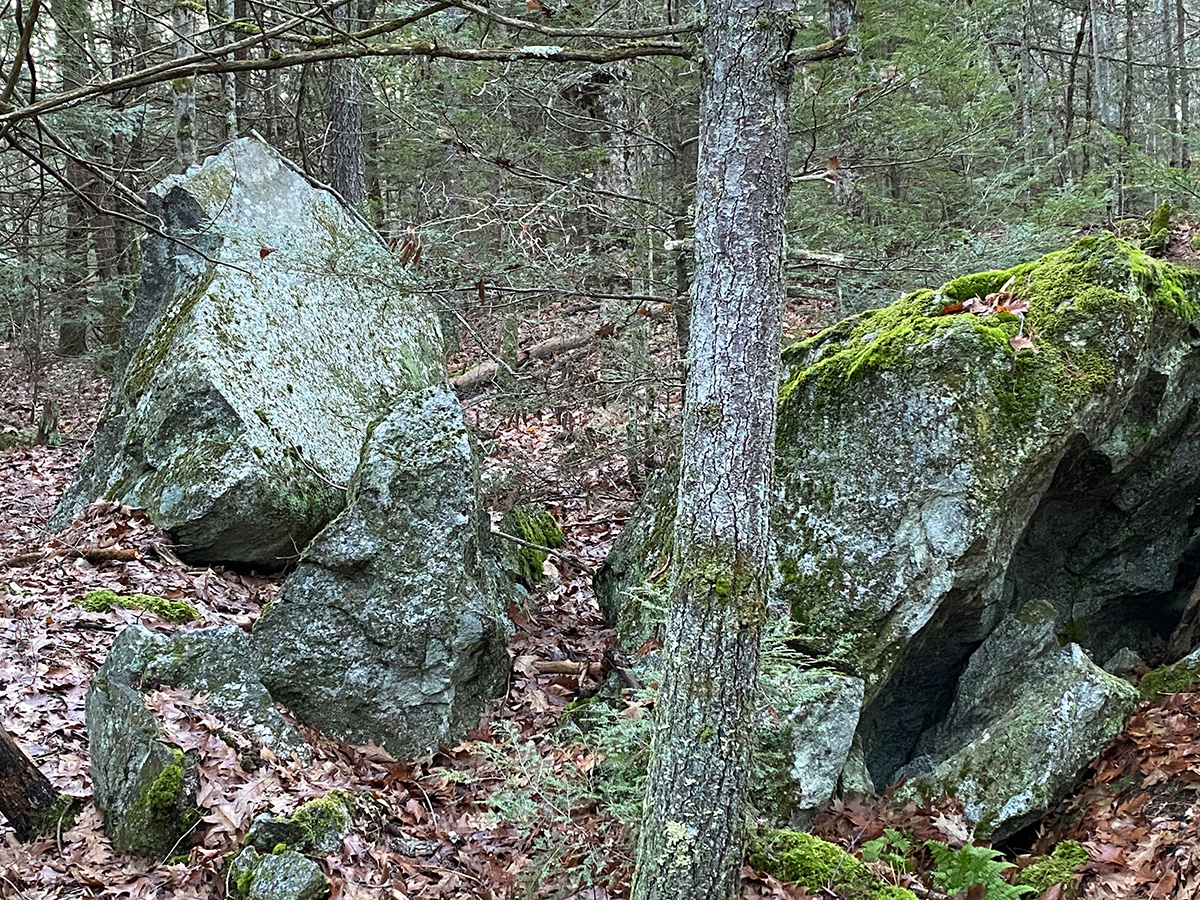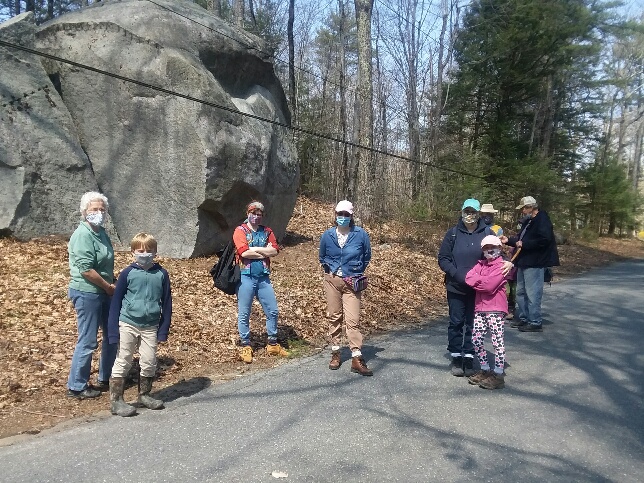Glacial Erratics
Within Our Area
An erratic is a rock, of various rock types, on the ground, or many, with a portion in the ground, deposed by the Wisconsin Glacier, 13,000 to 20,000 years ago. The rocks vary in size, from 100’s of feet long to just 2 feet long. They are mostly gray in color, due to the freezing and thawing throughout the seasons. Many are adorned by moss, rock tripe, and lichens.
Their locations depend on five (5) concepts: The first is a rock being trapped, within the ice sheet, or being pushed by the ice wall, traveling many miles to its present location. Winchendon’s, King Phillip Rock is an example.
The second concept: Is where a rock snapped of the bedrock, traveling just a few feet from its first location. The example here; the debris field in Farley, Ma.
The 3rd, is by water movement, washing around them, exposing them, along with the rocks sliding downhill a bit. Athol’s Balancing Rock exhibits this well.
The fourth concept is occurring, at this moment, and before the plants covered the soil. When the soil was exposed to the wind and sun, it would blow the soil off the high ridges into the valleys leaving the rocks exposed and sand blasted, changing their shape. Roll Stone Bolder exhibits this well.
The soil always absorbs the water, from rain and snow which made the soil travel slowly downhill, or it gradually creeps over the years, exposing the erratic. This is best seen, when a fence is on a side hill, and the fences and posts are leaning downhill, caused by the Tulsa Creep, or soil moving.
The last concept is in ponds, where the ice pushed rocks toward the center of the ponds, which is the last place to freeze. This occurs at the Ox Bow, in The Conn. River and in Club House Pond in Warwick, Ma.
I will list the erratics by the town they are in, followed by number and by name. ENJOY THE ERRATICS.
Geology Division Stepping Forward
by Paul K. Kachinsky


